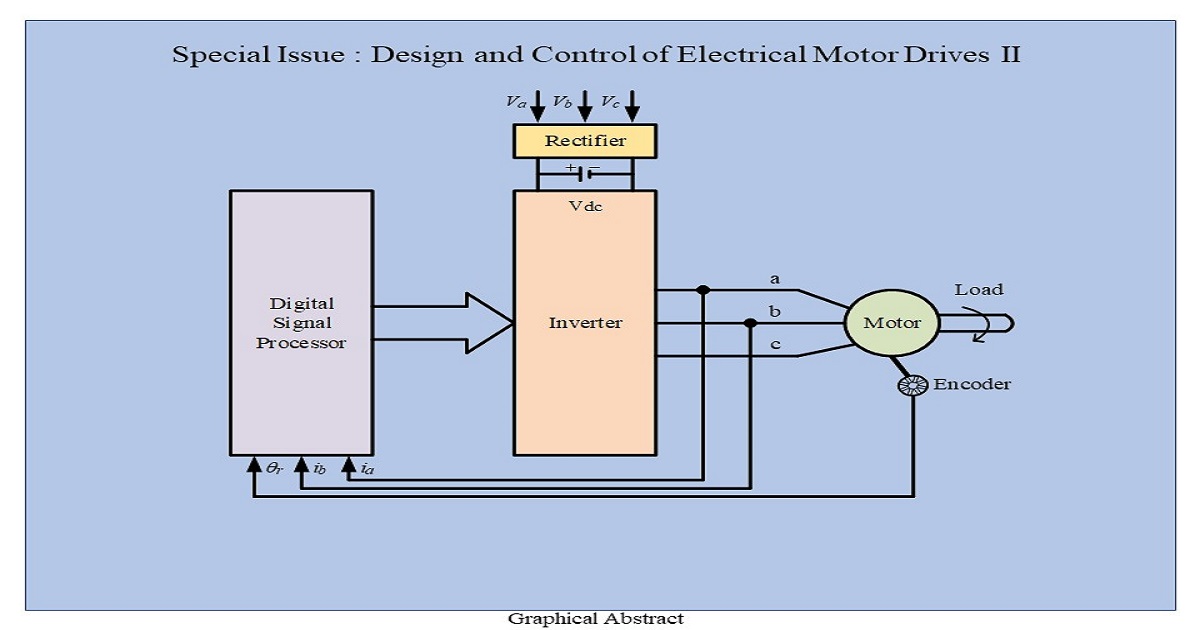Design and Control of Electrical Motor Drives II
A special issue of Energies (ISSN 1996-1073). This special issue belongs to the section "E: Electric Vehicles".
Deadline for manuscript submissions: closed (30 April 2023) | Viewed by 17427

Special Issue Editor
Interests: fault-tolerant drive system; sensorless drive system; permanent magnet synchronous motor drive system; advanced controller design; DSP-based drive system
Special Issues, Collections and Topics in MDPI journals
Special Issue Information
Dear Colleagues,
We are inviting submissions for a Special Issue of the journal Energies on the topic of Design and Control of Electrical Motor Drives.
Electrical motor drives are widely used in the industry, automation, transportation, and home appliances. Indeed, rolling mills, machine tools, high-speed trains, subway systems, elevators, electric vehicles, air conditioners, all depend on electrical motor drives.
However, the production of effective and practical motors and drives requires flexibility in the regulation of current, torque, flux, acceleration, position, and speed. Without proper modeling, drive, and control, these motor drive systems cannot function effectively.
To address these issues, we need to focus on the design, modeling, drive, and control of different types of motors, such as induction motors, permanent magnet synchronous motors, brushless DC motors, DC motors, synchronous reluctance motors, switched reluctance motors, flux-switching motors, linear motors, and step motors.
Therefore, relevant research topics in this field of study include modeling electrical motor drives, both in transient and in steady-state, and designing control methods based on novel control strategies (e.g., PI controllers, fuzzy logic controllers, neural network controllers, predictive controllers, adaptive controllers, nonlinear controllers, etc.), with particular attention to transient responses, load disturbances, fault tolerance, and multi-motor drive techniques.
This Special Issue encourages and invites original contributions regarding recent developments and ideas in motor design, motor drive, and motor control. Potential topics include, but are not limited to: motor design, field-oriented control, torque control, reliability improvement, advanced controllers for motor drive systems, DSP-based sensorless motor drive systems, high-performance motor drive systems, high-efficiency motor drive systems, and practical applications of motor drive systems.
We look forward to your submissions.
Prof. Dr. Tian-Hua Liu
Guest Editor
Manuscript Submission Information
Manuscripts should be submitted online at www.mdpi.com by registering and logging in to this website. Once you are registered, click here to go to the submission form. Manuscripts can be submitted until the deadline. All submissions that pass pre-check are peer-reviewed. Accepted papers will be published continuously in the journal (as soon as accepted) and will be listed together on the special issue website. Research articles, review articles as well as short communications are invited. For planned papers, a title and short abstract (about 100 words) can be sent to the Editorial Office for announcement on this website.
Submitted manuscripts should not have been published previously, nor be under consideration for publication elsewhere (except conference proceedings papers). All manuscripts are thoroughly refereed through a single-blind peer-review process. A guide for authors and other relevant information for submission of manuscripts is available on the Instructions for Authors page. Energies is an international peer-reviewed open access semimonthly journal published by MDPI.
Please visit the Instructions for Authors page before submitting a manuscript. The Article Processing Charge (APC) for publication in this open access journal is 2600 CHF (Swiss Francs). Submitted papers should be well formatted and use good English. Authors may use MDPI's English editing service prior to publication or during author revisions.
Keywords
- induction motor and drive
- permanent magnet motor and drive
- DC motor and drive
- brushless DC motor and drive
- synchronous reluctance motor and drive
- switched reluctance motor and drive
- switching flux motor and drive
- linear motor and control
- step motor and control
- fault-tolerant drive
- DSP-based motor drive
- High-efficiency motor and drive
- sensorless drive system





